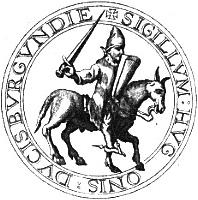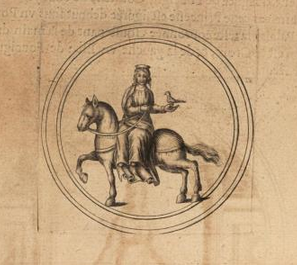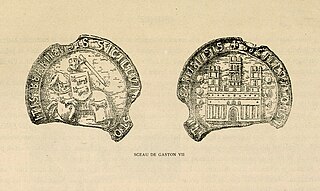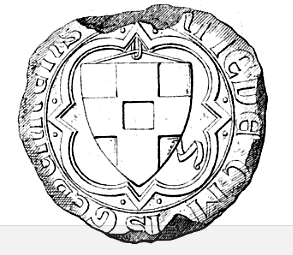Peter II, called the Little Charlemagne, was Count of Savoy from 1263 until his death in 1268. He was also holder of the Honour of Richmond, Yorkshire, England, the Honour of the Eagle also known as the Honour of Pevensey and the Honour of Eu also known as the Honour of Hastings. His significant land holdings in Sussex were also marked by his holding of the wardship of John de Warenne, 6th Earl of Surrey which brought with it lands centred upon Lewes castle. Briefly, from 1241 until 1242, castellan of Dover Castle and Keeper of the Coast. In 1243 he was granted land by the Thames in London where he later built the Savoy Palace.

Amadeus V, also known as Amadeus the Great, was the Count of Savoy from 1285 until his death in 1323. He was a significant medieval ruler who played a crucial role in the expansion and consolidation of the House of Savoy’s influence in the regions that are now part of modern-day France, Italy, and Switzerland.

Amadeus VI, nicknamed the Green Count was Count of Savoy from 1343 to 1383. He was the eldest son of Aymon, Count of Savoy, and Yolande Palaeologina of Montferrat. Though he started under a regency, he showed himself to be a forceful leader, continuing Savoy's emergence as a power in Europe politically and militarily. He participated in a crusade against the Turks who were moving into Europe.

Faucigny is a commune in the Haute-Savoie department in the Auvergne-Rhône-Alpes region in south-eastern France.

Hugh III was Duke of Burgundy between 1162 and 1192. As duke, Burgundy was invaded by King Philip II and Hugh was forced to sue for peace. Hugh then joined the Third Crusade, distinguishing himself at Arsuf and Acre, where he died in 1192.
Barral of Baux was Viscount of Marseilles and Lord of Baux. He was the son of Hugh III of Baux, Viscount of Marseilles, and Barrale.
Guigues VII (1225–1269), of the House of Burgundy, was the dauphin of Vienne and count of Albon, Grenoble, Oisans, Briançon, Embrun, and Gap from 1237 to his death. He was the son of Andrew Guigues VI and Beatrice of Montferrat. When his father died, his mother helped guide the leadership of the new Dauphin.

Margaret of Geneva, was a countess of Savoy by marriage to Thomas I of Savoy. She was the daughter of William I, Count of Geneva, and Beatrice de Faucigny (1160–1196).

Gaston VII de Montcada, called Froissard, was the twentieth Viscount of Béarn from 1229. He was the son and heir of Guillermo II de Montcada of the House of Montcada and of Garsenda, daughter of Alfonso II of Provence and Garsenda of Forcalquier. He was succeeded by Roger-Bernard III of Foix.

Humbert I of Viennois was baron of la Tour-du-Pin and then also became, by his marriage, dauphin of Viennois. He was the son of Albert III, baron of la Tour-du-Pin, and of Béatrice de Coligny.

Amadeus III was the Count of Geneva from 1320 until his death. He ruled the Genevois, but not the city of Geneva proper, and it was during his time that the term "Genevois" came to be used as it is today. He was the eldest son and successor of William III and Agnes, daughter of Amadeus V of Savoy. He played a major rôle in the politics of the House of Savoy, serving consecutively as regent and president of the council, and also sitting on the feudal tribunal—one of three tribunals of the Audiences générales—of the Duchy of Aosta.
Aymon II was the Count of Geneva from 1265. He was the son and heir of Count Rudolf, but died heirless himself and was succeeded by his brother Amadeus II. According to one modern historian, he was “overawed by the power of the count of Savoy”, and did little during his fifteen-year reign to recover the lands and jurisdictions lost to the Savoyards by his father and grandfather.

Amadeus II was the Count of Geneva, which included the Genevois, but not the city of Geneva, from 1280 to 1308. He was the second son of Count Rudolf and succeeded his heirless brother Aymon II.

Sybille de Baugé, Lady of Bâgé (1255–1294), was the suo jure Lady of Bâgé and Lady of Bresse in 1255-1294. She was a Countess Consort of Savoy in 1285-1294 by marriage to Amadeus V, Count of Savoy.

Geoffrey de Geneville, 1st Baron Geneville also known as Geoffrey de Joinville and Geoffroi de Joinville, was an Anglo-French noble, supporter of Henry III, who appointed him Baron of Trim, County Meath, and, subsequently, a staunch supporter of Edward I.

Beatrice of Savoy ruled as Lady of Faucigny, having succeeded her mother, Agnes of Faucigny. She was the only legitimate child of Peter II, Count of Savoy, but did not inherit the county, which passed instead to her uncle. Beatrice was also Dauphine of Viennois and Viscountess of Béarn by her two marriages.
Constance was suo jure Viscountess of Marsan as well as titular Countess of Bigorre, daughter of Gaston VII, Viscount of Béarn and his first wife Martha of Marsan. Constance inherited all of her titles from her mother and contended to inherit her father's Viscounty of Béarn. She was married three times during her lifetime, marrying into the royal families of Aragon, Castile and England.
William III of Geneva was the Count of Geneva from 1308 to 1320. He was the son of count Amadeus II of Geneva, and Agnès, daughter of John, Count of Chalon.
Anne of Viennois, was a Countess regnant suo jure of Viennois and Albon from 1282 to 1299, and the daughter of Guigues VII of Viennois and Beatrice of Savoy, Dame of Faucigny. She married Humbert, Baron of La Tour du Pin in 1273. She was buried in the Carthusian monastery of Salette, in the barony of La Tour.

Simon of Joinville was a French knight, who became the Lord of Joinville from 1204 until his death in 1233. He was also the hereditary seneschal of the County of Champagne.














